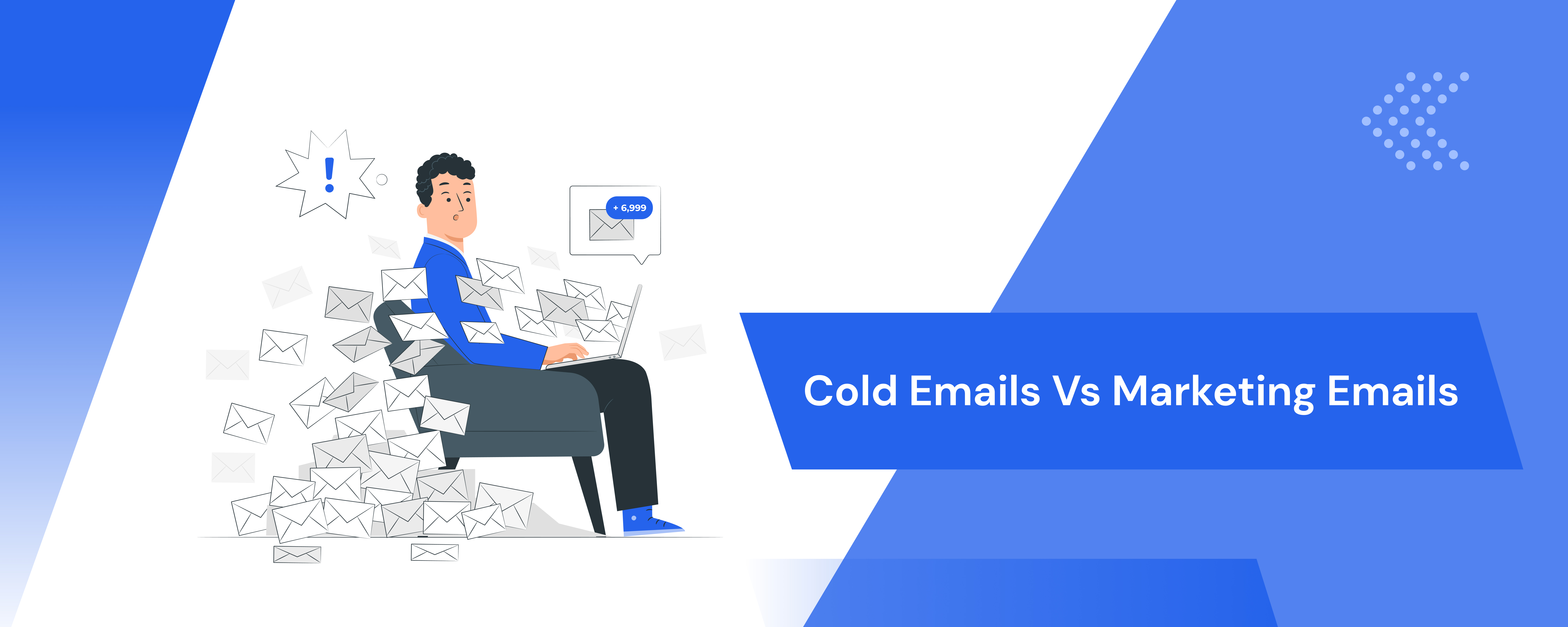Many entrepreneurs—particularly first-generation entrepreneurs—and sales representatives often interchange the terms marketing emails and cold emails.
But, they are distinct from each other.
It is essential to understand the difference before choosing the best cold outreach tool or email marketing automation tool for your business.
Otherwise, you may choose email marketing software for your cold emailing purpose and vice versa.
Table of Contents
What are Marketing Emails?
Marketing emails or email marketing is sending emails to a list of opt-in prospects or your existing customers to build relationships, promote products or services, and drive engagement or sales.
Marketing emails are about building a lasting relationship with your customers, subscribers, or leads who have already shown interest in your product or service.
Email marketing is not only about your business growth. It is about the mutual growth of both you and your customers.
Examples of marketing emails include newsletters, discount emails, transactional emails, and product recommendation emails.
In the above example, the newsletter and product recommendation emails are purely about giving value to your customers and prospects.
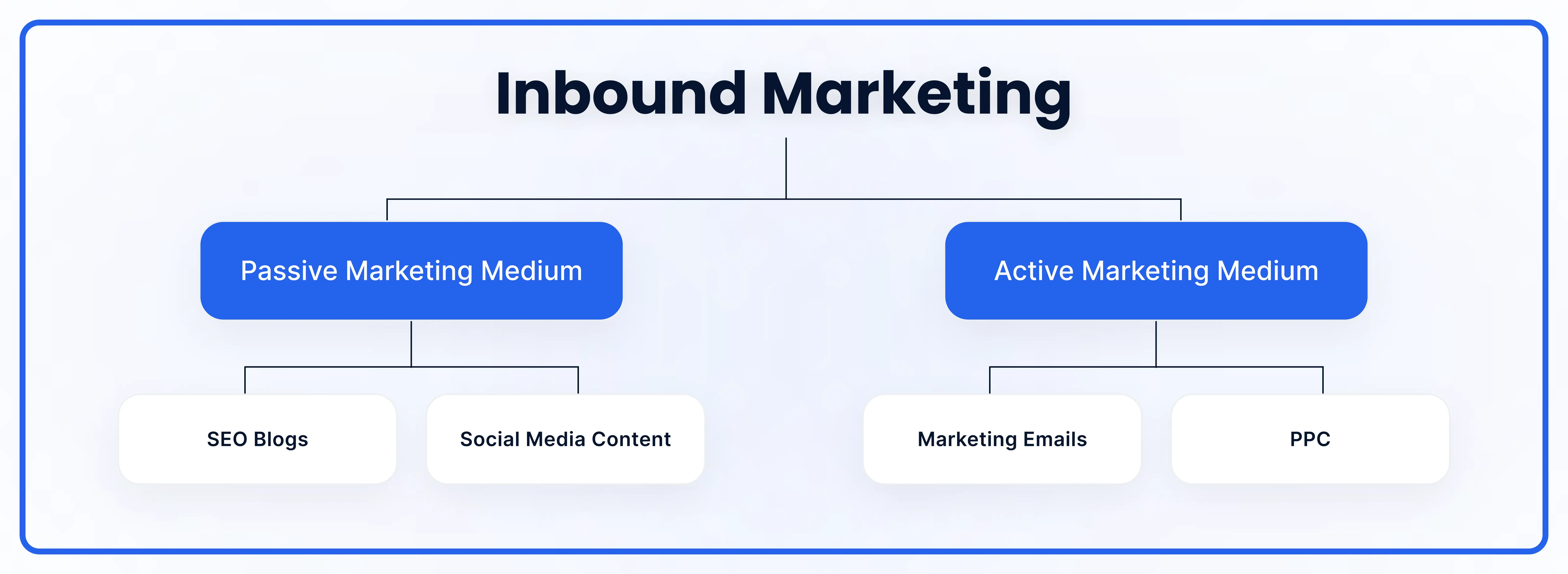
Marketing emails come under inbound marketing and fall under active marketing medium.
Inbound marketing can be split into two categories:
On the other hand, cold emailing is a different approach.
What are Cold Emails?
Cold emailing involves reaching out to individuals or businesses who have yet to express interest in your products or services.
The recipients of cold emails are not subscribed to your mailing list, and they might not be familiar with your brand.
Cold emailing is often used for outreach, lead generation, or sales prospecting. The goal is to initiate contact with potential customers or partners and generate interest in your offerings.
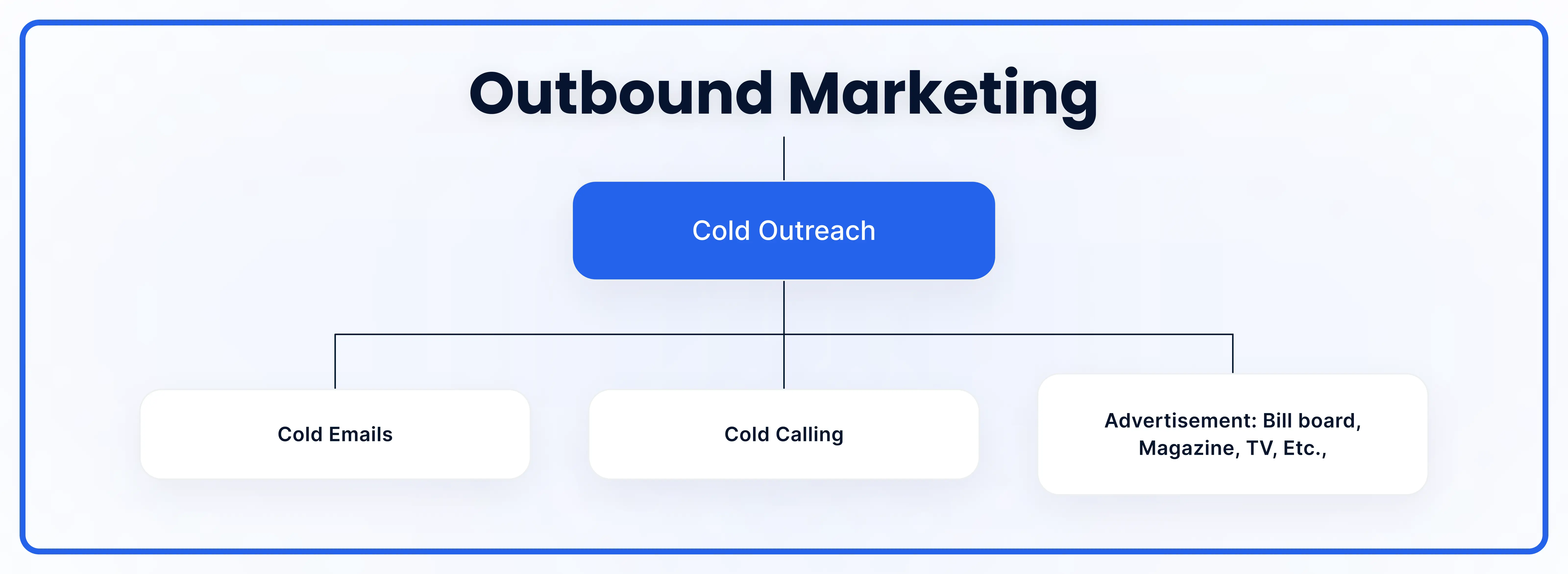
Cold emailing is a part of cold outreach which comes under outbound marketing. Cold outreach is an umbrella term and has three subcategories attached to it.
Difference Between Cold Emails and Marketing Emails
| Cold Emails | Marketing Emails |
|---|---|
| Emails sent to strangers - who might be potential customers | Emails sent to opt-in customers and prospects |
| Eg: leads extracted from LinkedIn and other portals | Eg: subscribed users and auto-sign up |
| Sent by marketing teams | Primarily sent by marketing teams; sometimes sales teams |
| It is about lead nurturing | It aims to building lasting relationship with existing customers, subscribers, or leads who have already shown interest |
| Timing: Often used in the early stages of the sales funnel | Timing: Ongoing and can occur at various stages of the customer lifecycle |
| Cold email best practices: Make the opt-out easy, make it GDPR compliant, clean email lists regularly, and implement proper data security | Marketing email best practices: Segmentation, make the opt-out easy, make it GDPR compliant, clean email lists regularly, and implement proper data security |
Recipients
The main difference between cold emails and marketing emails is that cold emails are sent to attract new customers with market expansion in mind.
In contrast, marketing emails are sent to build a lasting relationship with your existing customers.
However, marketing emails can also be sent to a new prospect who might be slightly familiar with your product or service.
Purpose
Cold emails are written to initiate contact and start a conversation with potential customers. The goal of cold emails is to create new leads and eventually move them to the sales funnel. On the other side, marketing emails are written to nurture your existing customer relationships and keep your brand top-of-mind.
Email Content
Cold email content are kind of persuasive writing that is intended to perform your leads any one of the following actions:
Almost all cold emails must include any one of the above call-to-action (CTA).
The marketing email content is informative. It either be about educating the leads about your product and industry or solutions about solving their pain points.
Degree of Personalization
Both cold emails and marketing emails are personalized to connect with leads, prospects, and customers and bypass spam filters ethically.
However, the personalization level is varied for both emails depending on the zero, first, and second-party data availability.
Since cold emails are targeted at prospects who are unfamiliar with your product, the availability of data must be restricted. Consequently, there is a limited potential for personalization in cold outreach.
Given that marketing emails primarily target existing customers or prospects who have provided their zero and first-party data, you can achieve hyper-personalization in marketing campaigns.
Email Frequency
Cold emails should be sent less frequently than marketing emails.
For example, you can send 3 cold emails in two weeks. Then, based on the reply, you can set the follow-up sequences.
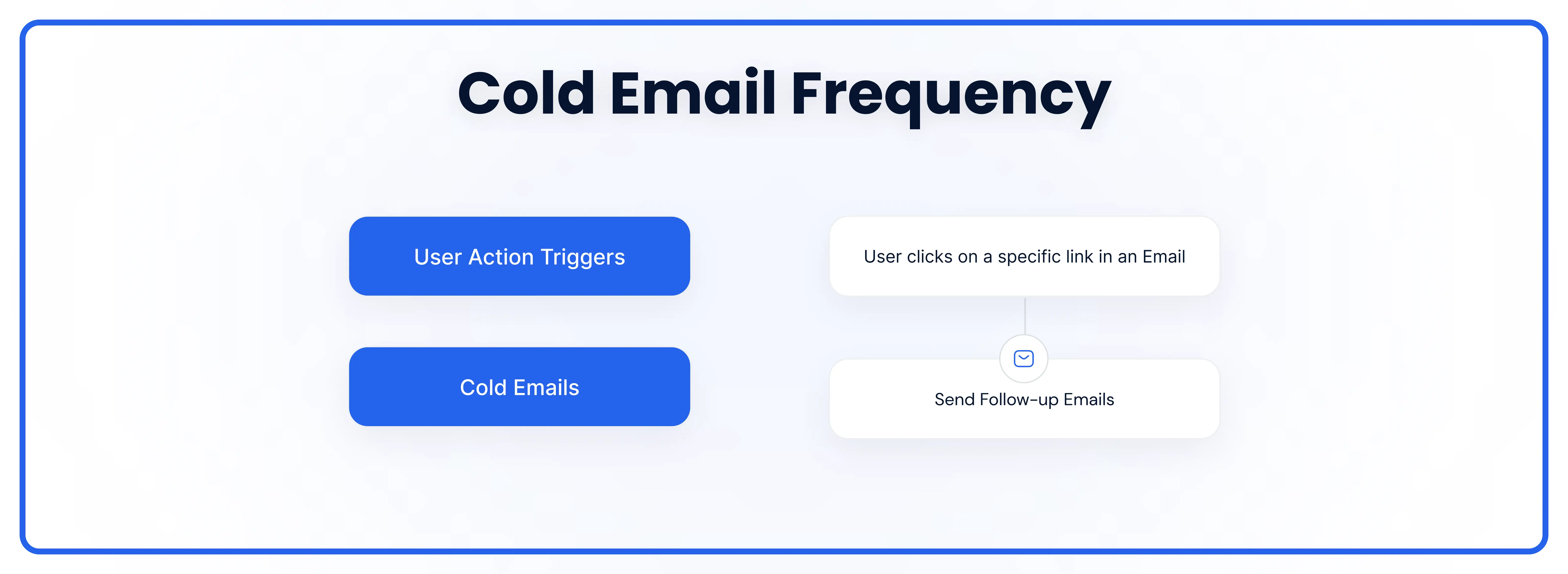
Usually, marketing emails can be sent more frequently than cold emails based on user action triggers and informational updates about the product and industry.
You don’t have to worry about the frequency of marketing emails since most of your recipients have given their consent to receive marketing updates.
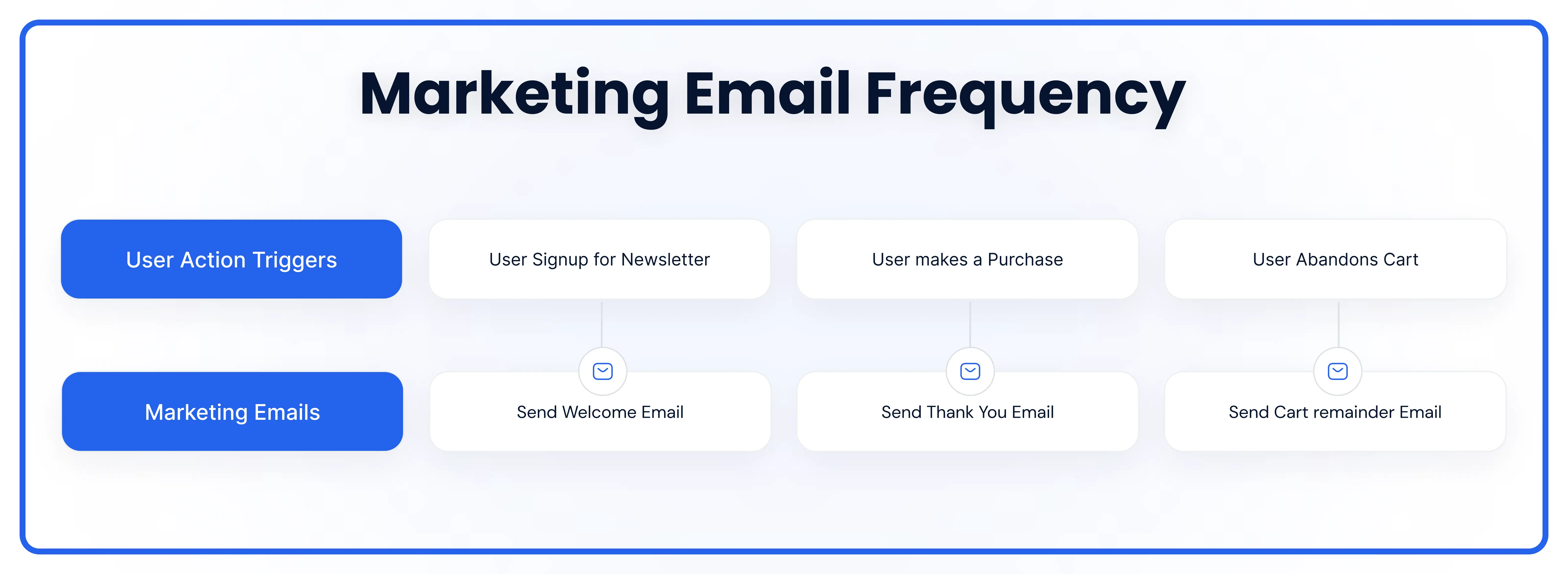
Now, you must have understood the difference between cold emails and marketing emails and their importance in business.
Example of Cold Emails and Marketing Emails
A good example of a cold email from GoZen:
Hi {{firstName}},
I’ve got a hack to slash {{companyName}}‘s spam rate by half within one month. Like we did for Travis Diener, CEO of iScoutLA.
If you want to talk about it, I’ll be happy to chat.
Here’s the response:

This simple cold email alone earned us six demos.
This is because the email follows one of the best practices of cold emails.
The email immediately gives value to the prospects without giving a bluff. It didn’t even talk about the company.
The email marketing metrics of this cold email are:
While our open rate falls within industry-average benchmarks, our response rate and delivery rate are slightly below par.
The lower delivery rate may be attributed to the quality of our lead list.
Regarding the response rate, although it is below the industry average, we have secured six valuable demos.
Here’s an excellent example of a marketing email from Grammarly:
I have been using Grammarly for over six months since joining GoZen. Last week, I received an email from Grammarly revealing my weekly statistics.
The above video is a perfect example of a marketing email.
The subject of this marketing email is enticing me to click the email as it is about to reveal my Grammarly stats and the best annual offer.
As you can see, my weekly statistics are well-segmented and easy to read. The vocabulary, tone, and my top 5 mistakes add real value.
Lastly, they smoothly included the upselling section. Instead of a “Buy Now” button, they have listed the features and toggle buttons beside them.
Upon enabling the toggle button, I landed on their pricing page.
This example is what the marketing email with soft selling looks like.
The Best Practices for Cold Emails and Marketing Emails
The best practices for cold and marketing emails are more or less the same.
It is essential to follow best practices to reduce the risk of spam and bounce rates and increase credibility. Let’s have a look.
Make the Opt-Out Easy
One-click unsubscribe is a must for all marketing and cold outreach campaigns. Apart from GDPR and CAN-SPAM regulations, now Google itself made it mandatory to include the “Unsubscribe” option in email campaigns.
Personalization
To avoid sounding like a robot, you must include personalization in your marketing and cold email campaigns.
In GoZen Growth, you can personalize your emails extensively using liquid formulas, going beyond basic first names and company personalization.
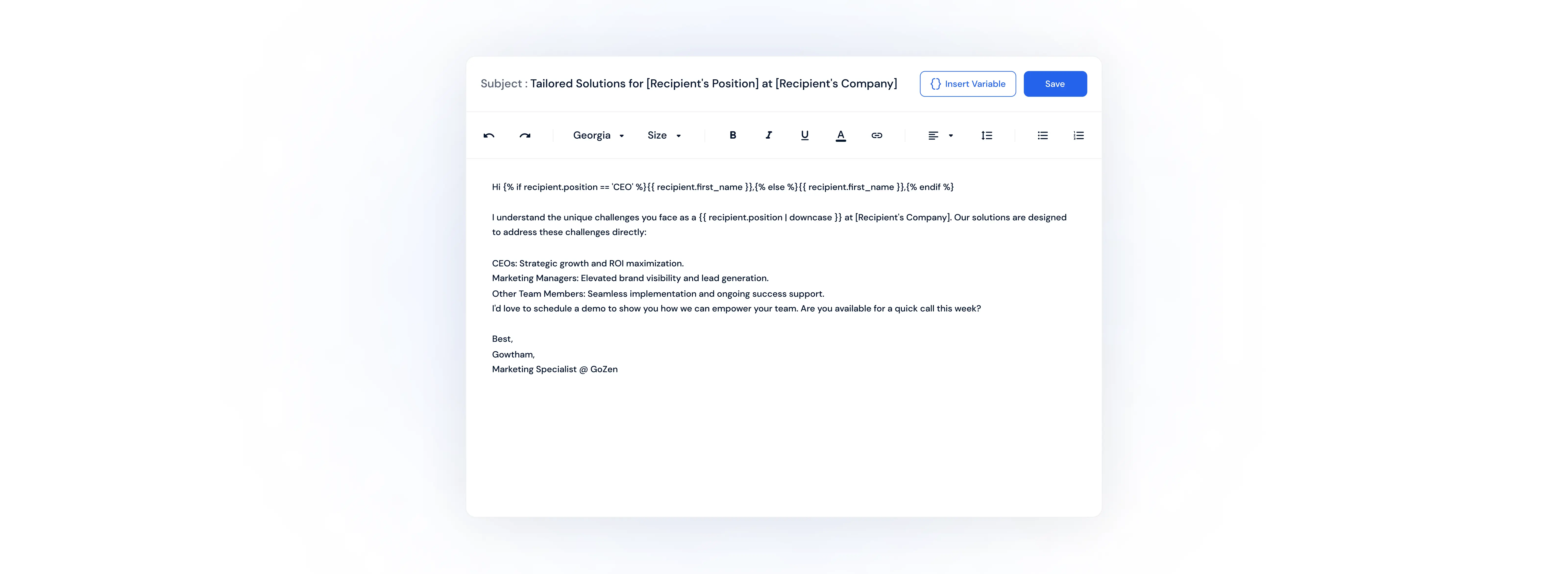
Make it GDPR and CAN-SPAM Act Compliant
GDPR Compliant
CAN-SPAM Act Compliant
Remember, you need to have compelling reasons and relevance of business activity to send cold emails to EU citizens and residents.
Clean Email List Regularly
It is essential to visit your email list periodically to clear people who have opted out of your new campaigns.
You should focus on and obey the data storage limitation principle of GDPR. Removing prospect data for individuals who have not responded to your cold emails within 30 days is advisable.
Can You Use Email Marketing Software for Cold Emailing?
You cannot use random email marketing software for your cold emails as they have certain terms and conditions that are not aligned with the cold email campaigns.
Yes, most of the popular email marketing software has the following terms and conditions that are not compliant with cold email marketing:
And, they lack cold email platform features, such as:
2-in-1 Software for Your Cold Email and Marketing Email Campaigns
GoZen Growth is the only 2-in-1 revenue growth platform in the market that can be used for both email marketing as well as cold outreach campaigns.
Growth has all the essential features of marketing and cold outreach campaigns’ success. With Growth, you can smartly schedule your cold email campaigns that sound like human sending.
Grow with a lifetime Free plan of Growth, which has all features including:
